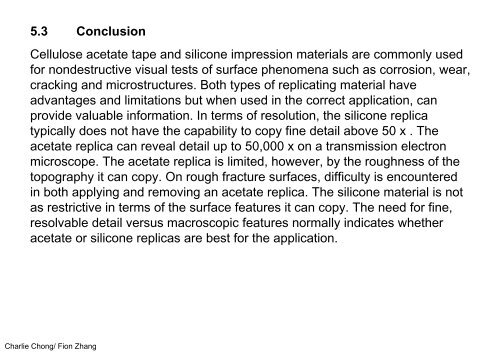ASNT Level III- Visual & Optical Testing
My Level III Self Study Notes Reading 4 Section 4B
My Level III Self Study Notes Reading 4 Section 4B
You also want an ePaper? Increase the reach of your titles
YUMPU automatically turns print PDFs into web optimized ePapers that Google loves.
5.3 Conclusion<br />
Cellulose acetate tape and silicone impression materials are commonly used<br />
for nondestructive visual tests of surface phenomena such as corrosion, wear,<br />
cracking and microstructures. Both types of replicating material have<br />
advantages and limitations but when used in the correct application, can<br />
provide valuable information. In terms of resolution, the silicone replica<br />
typically does not have the capability to copy fine detail above 50 x . The<br />
acetate replica can reveal detail up to 50,000 x on a transmission electron<br />
microscope. The acetate replica is limited, however, by the roughness of the<br />
topography it can copy. On rough fracture surfaces, difficulty is encountered<br />
in both applying and removing an acetate replica. The silicone material is not<br />
as restrictive in terms of the surface features it can copy. The need for fine,<br />
resolvable detail versus macroscopic features normally indicates whether<br />
acetate or silicone replicas are best for the application.<br />
Charlie Chong/ Fion Zhang


















